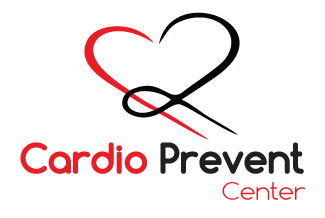Subscribe to out newsletter today to receive latest news administrate cost effective for tactical data.
2478 Street City Ohio 90255
Shopping cart
- Phone:211 21 51 016
- Email:ioannis.tza@gmail.com
- Τριών Ιεραρχών 101, Άνω Πετράλωνα, Αττική
Subscribe to out newsletter today to receive latest news administrate cost effective for tactical data.
2478 Street City Ohio 90255
Σφάλμα: Η φόρμα επικοινωνίας δε βρέθηκε.
Η δύναμη με την οποία η καρδιά εξωθεί το αίμα προς τα αγγεία σε κάθε παλμό.
Η πρώτη μέτρηση (η συστολική) αντιπροσωπεύει τη δύναμη της πίεσης που ασκεί το αίμα στα τοιχώματα των αγγείων κατά τη διάρκεια της συστολής της καρδιάς ενώ η δεύτερη μέτρηση (ή αλλιώς διαστολική) κατά τη διάρκεια διαστολής της καρδιάς.
Πρόκειται για την κατάσταση εκείνη που η πίεση στα αγγεία είναι αυξημένη. Επειδή η αρτηριακή υπέρταση είναι μια ασυμπτωματική νόσος πρέπει να μετρηθεί για να διαγνωστεί
Χρησιμοποιώντας ένα πιεσόμετρο (σφυγμομανόμετρο). Οι οδηγίες που θα πρέπει να ακολουθήσει ο εξεταζόμενος πριν τη μέτρηση της αρτηριακής πίεσης είναι: - να μην έχει πιει καφέ και να μην έχει καπνίσει τουλάχιστον μισή ώρα πριν - η μέτρηση γίνεται σε καθιστή θέση , αφού ο εξεταζόμενος ξεκουραστεί για περίπου 5 λεπτά - να είναι χαλαρός, ήρεμος και σε ευχάριστο περιβάλλον - η πλάτη να ακουμπά στη ράχη της καρέκλας και το μπράτσο να είναι ακουμπισμένο σε σταθερή επιφάνεια (πχ τραπέζι) - η περιχειρίδα του πιεσόμετρου να εφαρμόζει καλά πάνω στο βραχίονα και αν το μανίκι είναι σφιχτό θα πρέπει να αφαιρείται - η περιχειρίδα πρέπει να βρίσκεται περίπου στο ύψος της καρδιάς Καλό θα ήταν να γίνουν 2 μετρήσεις και να αποφεύγεται η μέτρηση όταν ο εξεταζόμενος έχει πονοκέφαλο ή όταν είναι εκνευρισμένος ή μετά από έντονη κόπωση, γιατί η μέτρηση δεν θα ανταποκρίνεται στην πραγματική πίεση.
Τόσο η μέτρηση στο ιατρείο όσο και στο σπίτι μπορεί να παράσχει πολύτιμες πληροφορίες στον θεράποντα ιατρό σχετικά με τη διάγνωση αλλά και το θεραπευτικό πλάνο που πρέπει να ακολουθηθεί.
Η αρτηριακή υπέρταση μπορεί να προκαλέσει βλάβες σε πολλά όργανα του σώματος, όπως στην καρδιά, τον εγκέφαλο, τα νεφρά, τους οφθαλμούς και τα αγγεία. Επειδή είναι μια ασυμπτωματική πάθηση, είναι πιθανό πολλές από αυτές τις βλάβες να μην διαγνωστούν έγκαιρα. Η αρρύθμιστη υπέρταση ευθύνεται για: - 67% των καρδιακών επεισοδίων - 77% των εγκεφαλικών επεισοδίων - 74% της καρδιακής ανεπάρκειας - τη νεφρική ανεπάρκεια (δεύτερη αιτία της) - την επιδείνωση της εγκεφαλικής δυσλειτουργίας και της νόσου Alzheimer
Για την επιτυχημένη ρύθμιση της πίεσης είναι πολύ σημαντική η συνεργασία του ασθενή με τον γιατρό του. Υπάρχουν επτά σημαντικοί τομείς που ο ασθενής θα πρέπει να συμμετάσχει ενεργά στη διαδικασία αντιμετώπισης και θεραπείας της υπέρτασης. 1. Βελτίωση των διατροφικών συνηθειών, με υιοθέτηση μιας μεσογειακού τύπου διατροφής και μείωση της χρήσης αλατιού 2. Φυσική δραστηριότητα, σε καθημερινή βάση 3. Διατήρηση φυσιολογικού σωματικού βάρους 4. Διαχείριση του άγχους 5. Διακοπή του καπνίσματος 6. Συμμόρφωση στην φαρμακευτική αγωγή, που έχει χορηγήσει ο θεράπων ιατρός 7. Μείωση της λήψης αλκοόλ Ακολουθώντας τις παραπάνω οδηγίες, θα αυξηθούν πολύ οι πιθανότητες καλής ρύθμισης της αρτηριακής πίεσης. Επιπλέον, όσοι δεν πάσχουν από υπέρταση, βάζοντας στην καθημερινότητα τους ένα πιο υγιεινό τρόπο ζωής, μπορούν να: - ελαττώσουν τις βασικές τιμές της αρτηριακής πίεσης - επιβραδύνουν ή σταματήσουν την εμφάνιση αρτηριακής υπέρτασης και επομένως να αποτρέψουν όλες αυτές τις επιπλοκές που η υπέρταση μπορεί να προκαλέσει στο καρδιαγγειακό σύστημα.

Δευτέρα15:00 - 21:00
Τρίτη15:00 - 21:00
Τετάρτη 10:00 - 13:00
Πέμπτη πρωί10:00 - 13:00
Πέμπτη απόγευμα15:00 - 20:00
Παρασκευή15:00 - 20:00

